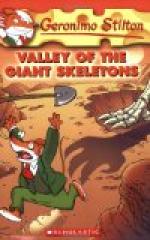Again a silence fell between them, broken presently by the old man. “That was a mistake—logging in the San Hedrin,” he observed. “I had my lesson that first year, but I didn’t heed it. If I had abandoned my camps there, pocketed my pride, paid Colonel Pennington two dollars for his Squaw Creek timber, and rebuilt my old logging-road, I would have been safe to-day. But I was stubborn; I’d played the game so long, you know—I didn’t want to let that man Pennington outgame me. So I tackled the San Hedrin again. We put thirty million feet of logs into the river that year, and when the freshet came, McTavish managed to make a fairly successful drive. But he was all winter on the job, and when spring came and the men went into the woods again, they had to leave nearly a million feet of heavy butt logs permanently stranded in the slack water along the banks, while perhaps another million feet of lighter logs had been lifted out of the channel by the overflow and left high and dry when the water receded. There they were, Bryce, scattered up and down the river, far from the cables and logging-donkeys, the only power we could use to get those monsters back into the river again, and I was forced to decide whether they should be abandoned or split during the summer into railroad ties, posts, pickets, and shakes—commodities for which there was very little call at the time and in which, even when sold, there could be no profit after deducting the cost of the twenty-mile wagon haul to Sequoia, and the water freight from Sequoia to market. So I abandoned them.”
“I remember that phase of it, partner.”
“To log it the third year only meant that more of those heavy logs would jam and spell more loss. Besides, there was always danger of another cloud-burst which would put me out of business completely, and I couldn’t afford the risk.”
“That was the time you should have offered Colonel Pennington a handsome profit on his Squaw Creek timber, pal.”
“If my hindsight was as good as my foresight, and I had my eyesight, I wouldn’t be in this dilemma at all,” the old man retorted briskly. “It’s hard to teach an old dog new tricks, and besides, I was obsessed with the need of protecting your heritage from attack in any direction.”
John Cardigan straightened up in his chair and laid the tip of his right index finger in the centre of the palm of his left hand. “Here was the situation, Bryce: The centre of my palm represents Sequoia; the end of my fingers represents the San Hedrin timber twenty miles south. Now, if the railroad built in from the south, you would win. But if it built in from Grant’s Pass, Oregon, on the north from the base of my hand, the terminus of the line would be Sequoia, twenty miles from your timber in the San Hedrin watershed!”
Bryce nodded. “In which event,” he replied, “we, would be in much the same position with our San Hedrin timber as Colonel Pennington is with his Squaw Creek timber. We would have the comforting knowledge that we owned it and paid taxes on it but couldn’t do a dad-burned thing with it!”




